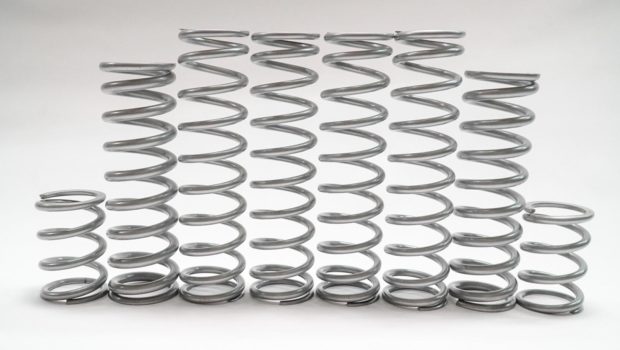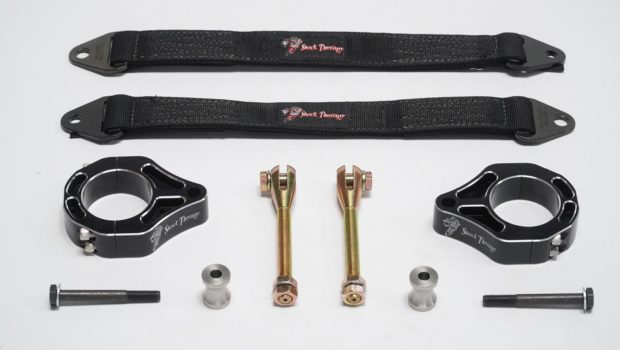Published on June 21st, 2022 | by Joe
Shock Therapy Suspension Upgrades for the Polaris RZR Pro R and Turbo R models
Now available for the RZR Pro R & Turbo R:
Dual-Rate Spring Kits, Limit Straps, and a Ride-Improvement System
to take riding to the next level
PHOENIX, Arizona, June 17, 2022 –– The market leader in off-road suspension, Shock Therapy (www.ShockTherapyUSA.com) proudly announces the release of their Dual-Rate Spring Kit, Ride-Improvement System, and Limit Straps for the Polaris RZR Pro R and Turbo R models. Although the Turbo R and Pro R share many suspension components, there are some significant differences, and our Dual-Rate Spring Kits and Ride-Improvement Systems are specifically tailored to each.
Dual-Rate Spring Kit (DRS)
Undeniably, the Dual-Rate Spring Kit by Shock Therapy is the best starting point when upgrading one’s suspension setup. Tailored to the individual’s needs and unit specifications, we consider driver & passenger weight, aftermarket accessories, terrain, driving style, and more. The Dual-Rate Spring Kit provides for increased ride height, increased bottom-out resistance, reduced bucking, smoother ride quality over chop & chatter, no sagging, and springs manufactured in the USA with a lifetime warranty.
Ride-Improvement System (RIS)
Shock Therapy’s Ride-Improvement System (RIS) drastically modifies the internals of the shock for a major upgrade in performance –– with internal valving custom-tailored to the driving style of each unit and the different terrains one tackles. The modifications inside the shock result in superior handling and plushness through small chop & chatter, increase bottom-out resistance at full compression, and remove excessively stiff ride quality at moderate & low speeds. Far from being only for racing applications, Shock Therapy’s RIS also supports recreational riders looking to get the most out of their suspension.
Limit Straps (front)
At its simplest, a limit strap is a flexible strap that functions to prevent the shock from fully extending. Especially as one gets bigger tires and wheels on their rig, the ‘clunking’ sound of the shocks dropping out and hanging on the top-out spring is probably a familiar one. Originally tuned for the factory wheel and tire settings, the internal spring will not be stiff enough to arrest extension with heavier aftermarket upgrades –– making front Limit Straps a must-have.
Our patented design features a billet aluminum, laser-engraved upper mount and also prevents the strap from interfering with or getting tangled on other parts when the shock compresses and the strap’s slack increases. Set apart from most other options too, Shock Therapy’s Limit Straps not only adjust but bolt directly to the shock itself –– allowing the strap to be perfectly in line with the shock, thereby limiting the leverage exerted on it and increasing strap life.
More Products Coming Soon
Shock Therapy will also have Radius Links, Sway bar Links, Adjustable Toe Links, and Tie Rods for the Polaris RZR Pro R and Turbo R.
About Shock Therapy
Dominating the off-road industry as the premier suspension tuning company, Shock Therapy has over 25 years of racing experience and data to build upon in order to deliver the highest quality products to their customers –– whether they’re looking for a plush ride on their weekend toy, or a race-winning setup to ride roughshod over the competition. Unlike most other suspension companies, we don’t just rebuild or re-valve shocks, we physically drive, test, research, and develop all we do to achieve the best possible system for the application. We test nearly every model of UTV on the market on our own, private, 5.5 mile test track with one thing in mind: creating the BEST ride possible with quality components.
With our suspension expertise, one can exponentially improve their ride quality the minute they bolt a Shock Therapy product on their vehicle.
For more information, visit the company website at www.ShockTherapyUSA.com, or find us on Facebook, Instagram, & YouTube.








